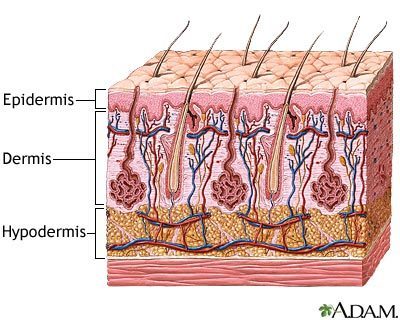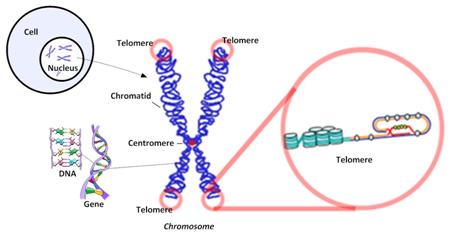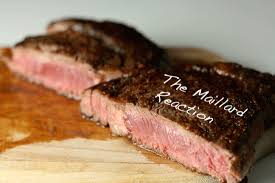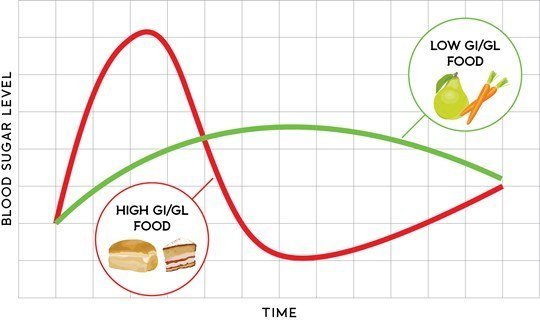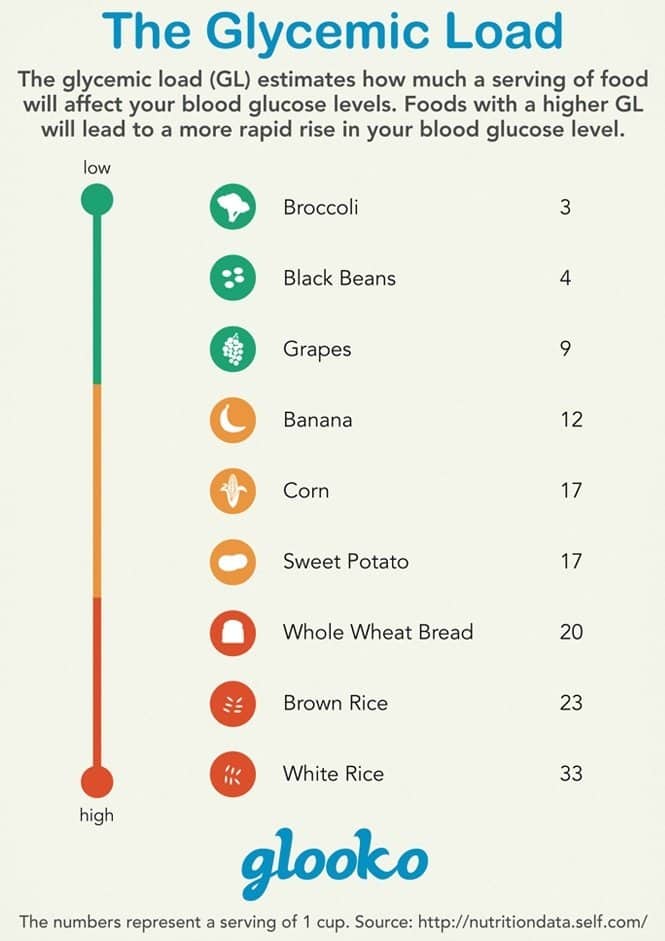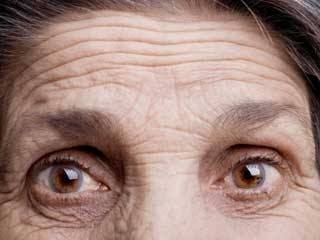Your Battleplan To Combat Aging Skin, Part 1/3
Typically the fastest way you can get a sense of a person’s age is by their skin. The more skin sags and is wrinkled, the older a person appears. You can fight back. Here’s Part 1 of your battleplan to combat aging skin.
 TIME IS not kind to skin. Just like every other organ, our skin wears out over time. Depending on various factors such as genetics and lifestyle, normal physiologic skin functions may decline 50% by middle age.
TIME IS not kind to skin. Just like every other organ, our skin wears out over time. Depending on various factors such as genetics and lifestyle, normal physiologic skin functions may decline 50% by middle age.
Unlike every other organ, our skin reveals its age, blatantly. Our face, neck, hands and feet reveal that without certain nutritional and topical interventions, time will wrinkle us, as our skin loses its fibrous tissue, and slows it’s rate of cellular renewal.
So, what can we do?
We can fight back! We can dramatically slow, and potentially reverse, the signs and symptoms of skin aging.
In this article, Your Battleplan To Combat Aging Skin, Part 1, I’m going to summarize the Life Extension Foundation strategies to combat skin aging. After a review about skin anatomy and function, we’ll explore the internal and external factors that age skin, and then the dietary and nutritional steps you can take to combat aging skin.
Next week, I’ll finish this two-part series post Part 2 of this three-part series (yes, it’s grown) with an article that explores topical interventions containing scientifically advanced ingredients that help support youthful skin structure and function, and targeted nutritional supplements that fortify your skin form the inside out.
Sound good?
Let’s dig in…
What is Skin? — Skin Anatomy and Function
Few people realize that their skin is actually an organ.
It’s our largest organ by surface area – between 16 and 22 square feet – and serves to regulate excretion of metabolic waste products, regulate temperature, and our skin includes receptors for pain, tactile sensation, and pressure.
Skin is comprised of three distinctive layers, each exhibiting a unique cellular makeup and physiologic function:
- Epidermis,
- Dermis, and
- Hypodermis.
I’ll be referring to each of these three throughout this article, so it would be helpful to remember their attributes.
The Epidermis is the outermost layer of our skin, and thus provides protection against the environment. It’s comprised of keratin, which strengthens the skin, and melanin, found in the basal layer of the epidermis, responsible for depth of skin color.
The Dermis is directly below the epidermis. Think of it as a scaffold for strength and support. Unlike the epidermis, the dermis contains nerves, blood vessels, and fibroblasts that provide sensory receptors, deliver nutrients, and maintain the structural foundation of the skin.
Collagen is the most abundant connective material within the dermis. It’s a fibrous protein whose primary function is to maintain skin firmness. Elastin protein fibers combine with collagen to give the skin elasticity.
The bottom layer of the skin is the Hypodermis. It contains fat cells that insulate the body and help to preserve heat, as well as other connective tissues.
Skin contains the sebaceous glands and sweat glands (eccrine and apocrine), which help to prevent dryness, protect skin against bacteria, and maintain core body temperature (thermoregulation).
Since a “picture is worth at thousand words”, check this out:
How Does Skin Age?
Generally speaking, aging skin is the result of several factors such as:
- Intense physical and psychological stress,
- Alcohol consumption,
- Poor nutrition,
- Overeating,
- Environmental pollution, and
- Ultra violet (“UV”) exposure.
These factors play out through certain intrinsic” and extrinsic” microbiological and genetic processes.
Four Intrinsic Factors in Skin Aging
Intrinsic, or internal, skin aging is determined primarily by genetic factors, hormonal status, and metabolic reactions, such as cellular oxidative stress.
These are the basic factors by which all our other organs age, but with skin, we see what’s happening – our skin visibly discloses many aspects of what’s occurring on the inside, so let’s peek at these four “intrinsic” factors that age skin.
1. Genetics
Cellular aging is the process by which a cell becomes old and can no longer replicate. Known as “replicative senescence,” this can be the result of DNA damage induced by factors such as UV radiation, toxins, or age-related deterioration.
A hallmark of replicative senescence is the shortening of telomeres, the “caps” at the ends of DNA strands that help ensure chromosomal stability during repeated cell division.
[Telomeres are a fascinating subject, so check out: Three Months To Longer Life]
Skin cells are some of the most rapidly dividing cells in the body, which makes them vulnerable, because DNA damage accumulates with age and the rapid skin cell division causes them to be intrinsically vulnerable to replicative senescence, especially if measures to protect skin cells from damage aren’t established.
2. Hormones
With aging, there is a decline in the level of sex hormones (estrogen, testosterone, DHEA), and growth hormone.
These particular hormones greatly influence skin health, and they need to be balanced and optimized to decelerate skin deterioration.
For women, the change in hormone levels during menopause (especially estrogen) is accompanied by significant changes within the skin. Estrogen influences skin thickness, wrinkling, and moisture.
As estrogen levels decline, skin cellular renewal becomes sluggish, resulting in thinning of the epidermal and dermal layers, the first two skin layers. Moreover, capillary blood circulation velocity decreases significantly, and the ability for the skin to maintain hydration, strength and elasticity suffers as a result.
3. Oxidative Stress
Oxidative stress plays a central role in initiating and driving events that cause skin aging at the cellular level.
Oxidative stress breaks down protein (collagen), alters cellular renewal cycles, damages DNA, and promotes the release of cytokines (pro-inflammatory mediators), which trigger the generation of inflammatory skin diseases.
As the outermost barrier separating internal tissue from the environment, our skin is regularly exposed to UV radiation and air pollution. These exposures induce the production of highly volatile molecules called free radicals, which damage the cellular environment of the skin.
Chronic free radical assault leads to the appearance of uneven, blotchy pigmentation, and weakens the structural framework of the skin (the dermis), giving rise to wrinkles and sagging skin.
Free radicals also arise from internal, metabolic reactions like glycation from elevated blood sugar, so simply avoiding exposure to UV light is not adequate for optimal protection.
In addition to the skin’s antioxidant defense, epidermal immune cells called “Langerhans cells” help protect the skin by recognizing antigens (foreign substances), and inducing antibody defense responses.
In aging skin there’s a reduced number of immune Langerhans cells, thereby affecting skin’s ability to resist or eliminate stressors or infection that may impact its health.
That the number of Langerhans cells diminishes with age is unfortunate because with advancing age, skin immunity declines, increasing the incidence of infection, malignancies and structural deterioration – all of which could be ameliorated by Langerhans cells.
4. Elevated Blood Sugar Levels and Glycation
Glucose is a vital cellular fuel. It is a monosaccharide (simple sugar), a basic carbohydrate, that is absorbed directly into the bloodstream during digestion, and is probably the most common fuel sources used by organisms, both bacteria and humans.
However basic and essential it is, glucose does present a problem to people in the industrialized world. Simply put – we eat too many simple carbohydrates, which overwhelm the insulin that the pancreas makes to shuttle the glucose into our blood.
Eventually, our insulin becomes desensitized; the sugars do not become absorbed into the blood and used for energy, and thus accumulate as fat. That’s the secondary effect. The primary effect is adult-onset, type 2 diabetes.
Diabetics experience accelerated aging, in part, due to a process called glycation.
You know what glycation looks like – sizzling, dark brown, seared meat. When the proteins in meat (and many other foods) are exposed to heat they cause the meat to turn dark brown in a chemical process called the Maillard reaction.
Similarly, once sugars enter the circulation in the body, they attach themselves to the amino groups of tissue proteins such as collagen to slowly rearrange their youthful structure into damaging advanced glycation end products (AGEs).
AGE molecules are particularly destructive since they can undergo extensive cross-linking with other proteins to form strong chemical bridges. As a result, once healthy collagen fibers lose their elasticity, they become rigid, more brittle, and prone to breakage.
Three Extrinsic Factors in Skin Aging
UV radiation, wavelength and environmental toxins are three environmental (external, or “extrinsic”) factors that age skin.
1. UV Radiation and “Photoaging”
Among the most significant of extrinsic factors in skin ageing is solar ultraviolet radiation (“UVR”). Epidemiological and clinical studies have identified excessive sun exposure as a primary causal factor in various skin diseases including, premature aging, inflammatory conditions, melanoma and non-melanoma skin cancers.
When skin is exposed to excess UV radiation, a series of harmful biochemical reactions occur within the skin referred to as “photoaging”. Chronic sun exposure damages the dermal connective tissue and alters normal skin metabolism.
The destruction of collagen is a major contributor to the loss of skin suppleness and structure that occurs with as we age.
2. UV Wavelengths and Their Effects on the Skin
UV-A radiation (long wave) induces oxidative stress that stimulates post-UV inflammation and hyperpigmentation (melanin production). Ironically, it is oxidative stress that creates the “tanned” skin so often mistakenly associated with health and vitality.
A suntan is evidence of skin damage, and represents the skin’s attempt to protect itself from further damage.
UV-B radiation (mid wave) is highly damaging to DNA and epidermal keratinocytes, – the dominant cell type in the epidermal skin layer – and is mainly responsible for nonmelanoma skin cancer.
UV-B radiation also stimulates the synthesis of vitamin D within the skin, but obtaining optimal vitamin D levels only through sun exposure may result in excess sun exposure damage that would override the beneficial effects of vitamin D.
That means we should consider vitamin-D supplementation, particularly if you’re a person of color over 40 years of age living above latitude of 34 degrees, the latitude of Atlanta, Georgia.
Supplementation with about 5000– 8000 IU of vitamin D daily is a good way to ensure optimal vitamin D status for most individuals.
Note: This does not mean you need to huddle under an umbrella every time the Sun is out. Sun on your body is a healthy thing, but limit exposure to 15 minutes at a time for body parts without sunscreen.
3. Environmental Toxins
Do I even need to mention tobacco?
Tobacco use is a major factor that contributes to many chronic diseases and reduced life expectancy.
Smoking tobacco:
- Produces oxidative stress,
- Impairs circulation, and
- Triggers DNA damaging reactions, making the skin more vulnerable to disease and aging.
Increased lines and wrinkles, uneven tone, dehydration, and dull and frail skin aptly describe “Smoker’s skin”.
The good news for smokers is that if they quit, dramatic improvements in their skin often occur within nine months.
The Solution to Aging Skin – An Ongoing Battle
The war against aging skin is never won; instead, it’s a series of ongoing battles. Your weapons must include dietary, nutritional, topical, hormonal and supplementation strategies. Diet and nutrition are covered below. Topical lotions, hormones and supplements will be covered in Part 2.
Dietary Strategies to Combat Aging Skin
Like any other organ, your skin needs to be appropriately fed. Lathering on exotic skin creams is insufficient.
In addition to the well-documented role of a wholesome, plant-based diet in maintaining the youthful suppleness of skin, modern nutritional science is demonstrating the relationship between specific nutrients and optimal skin health, which we’ll get to shortly.
Unsurprisingly, the typical North American diet falls considerably short of providing the nutritional composition needed to keep skin healthy and vibrant.
Here’s what you need to know about the effects of micro and macronutrients upon your skin:
• Macronutrient Composition and Glycemic Load
The North American diet contains excessive amounts of simple carbohydrates and saturated fats, and this dietary pattern correlates with an increased appearance of skin wrinkles.
The glycemic index measures how rapidly and significantly foods cause blood sugar elevations following consumption. Epidemiology data suggest that a high glycemic diet may contribute to inflammatory skin conditions such as acne, rosacea, psoriasis, and eczema.
When sugar comes in contact with collagen (a protein), a reaction, called glycation, occurs resulting in the formation of tissue-destroying advanced glycation end products (AGES).
Glycation occurs in all tissues of the body, but is accelerated by a high sugar diet, and – as concerns the skin — excessive sun exposure.
Protein glycation and AGE formation are accompanied by increased free radical activity in skin collagen, which accelerates skin aging.
And we all know what that looks like on the skin’s surface – wrinkles!
Eat less sugar and low-glycemic carbs. Your skin will thank you.
• Micronutrient and Antioxidant Density
Choose whole foods that are densely packed with micronutrients and antioxidants, instead of commercially manufactured, overly processed foods, which are devoid of nutrition, yet rich in unhealthy fats and high glycemic carbohydrate calories.
Clinical studies have shown that catechins from green tea, anthocyanins from dark berries and red cabbage, bioflavonoids from citrus, carotenoids such as lycopene and lutein from tomatoes, resveratrol from red wine and genistein from soy (fermented is far superior) offer potent secondary antioxidant protection in the skin.
• Fatty Acid Composition
Having the right amount (and type) of fats through diet or supplementation is critical to maintain healthy skin as we age.
In the past, a traditional diet provided a healthy ratio of 4 to 1, omega-6 to omega-3 fatty acids. These days, it’s typically 15 to 1.
We’re consuming much too much arachidonic acid (a polyunsaturated omega-6 fatty acid) from foods such as egg yolks, poultry skin and organ meats from animals fed corn-based diets, instead of grass. This has a pro-inflammatory effect in the body and skin.
What’s typically needed in our diet is to increase the consumption of foods containing omega-3 fatty acids, such as fish oil, salmon, walnuts, flax seeds and chia seeds. (Check out this list.)
• Sodium and Hypertension
The North American diet relies heavily on over-processed, salty foods. High sodium intake may increase the risk of developing hypertension.
People with borderline and established hypertension have significantly lower skin capillary densities than non-hypertensive subjects, but by reducing sodium intake in hypertensive people, microcirculation and capillary densities in the skin can be improved.
• Caloric Intake
Studies indicate that calorie restriction (”CR”) promotes longevity through improving body composition and optimizing metabolic function. This is evident with long-term studies of various primate species, and the health benefits of CR are indicated in humans as well.
CR may promote healthier skin aging due to improved skin cell renewal and repair mechanisms.
The Best Diet to Combat Aging Skin
Some studies indicate that the Mediterranean Diet is linked with improved health and longevity.
[See Your Very Best Diet Verified By Science for a review of popular diets.]
The Mediterranean diet focuses on fruits, vegetables, whole grains, legumes, monounsaturated fats (MUFA, such as those found in olive oil), and a healthy ratio of omega-3 to omega-6 polyunsaturated fatty acids (PUFAs).
Here’s how it compares to other popular diets:
An impressive amount of epidemiological data link the Mediterranean diet with improved cardiovascular, cognitive, and metabolic health, not to mention the skin.
The Mediterranean diet may exert an anti-inflammatory effect due in part to its emphasis on extra virgin olive oil, which is high in compounds that modulate oxidative stress and quell inflammatory reactions.
(Note: Do not heat olive oil above its “smoke point” roughly between 365 and 400ºF (185 and 204ºC). Preferably, don’t heat it at all; instead, use grass-fed butter or virgin organic coconut oil. More here.)
The anti-inflammatory compound in olive oil is “Oleocanthal”, which may have anti-inflammatory actions similar to ibuprofen.
That said; don’t overdo it with olive oil. You don’t want to exacerbate what may already be an out of proportion ratio of your omega-6 and omega-3 fatty acids. Also, there are other very good anti-inflammatory foods you can consume instead of olive oil, which I write about in, Why Dr. Weil’s Anti-inflammatory Food Pyramid May Be The Best Diet.
In one hospital-based study in Italy (Fortes 2008), researchers compared medical and lifestyle history, sun exposure habits and dietary patterns of more than 300 controls (subjects without melanoma) to over 300 cases of cutaneous melanoma patients. Upon analysis and careful control for sun exposure and pigmentary characteristics, those foods typical of the Mediterranean Diet — namely, shellfish, fish rich in omega-3 fatty acids, green tea, fruits and vegetables — were associated with improved skin health.
Your Takeaway
In this article, we examined what skin is, how and why it degrades over time, and what are the food-based nutritional interventions that can slow down – or in some cases, reverse – the rate that skin ages.
Right now you can begin doing these six things to combat aging skin:
- Dramatically reduce your consumption of foods and drinks that contain sugar.
- Dramatically reduce your consumption of foods and drinks that spike blood sugar, which are high glycemic carbohydrates. (More here.)
- Reduce sun exposure to 15-minutes for skin without sunscreen lotion.
- Manage your stress. (More here.)
- Stop smoking.
- Reduce alcohol consumption.
Next week in Part 2, I’ll dive into how to combat aging skin with:
- Hormone therapy
- Natural minerals and vitamins
- Plant polyphenols
- Plant-based ceramides
- Soy compounds, and
- Peptide-based creams and compounds.
Stay tuned… over and out.
Continue to Part 2 >>
IMPORTANT DISCLAIMER
Disclaimer and Safety Information
Joe Garma is not a medical doctor, and neither he nor the information in this article — or anywhere on this website — is not intended to replace the attention or advice of a physician or other qualified health care professional. Anyone who wishes to embark on any dietary, drug, exercise, or other lifestyle change intended to prevent or treat a specific disease or condition should first consult with and seek clearance from a physician or other qualified health care professional.
Pregnant women in particular should seek the advice of a physician before using any protocol listed on this website. The information and protocols described on this website are for adults only, unless otherwise specified. Product labels may contain important safety information and the most recent product information provided by the product manufacturers should be carefully reviewed prior to use to verify the dose, administration, and contraindications. National, state, and local laws may vary regarding the use and application of many of the treatments discussed.
The reader assumes the risk of any injuries. The authors and publishers, their affiliates and assigns are not liable for any injury and/or damage to persons arising from this protocol and expressly disclaim responsibility for any adverse effects resulting from the use of the information container herein.
The information and protocols on this website raise many issues that are subject to change as new data emerge. No information or suggested protocol regimens can guarantee health benefits. Joe Garma has not performed independent verification of the data contained herein, and expressly disclaim responsibility for any error in literature.
Last Updated on December 13, 2015 by Joe Garma

